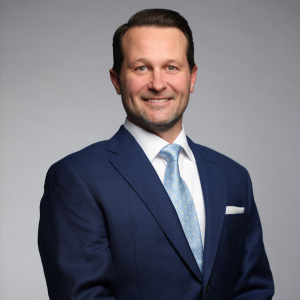Preparing to retire: Exit strategies for senior care owners
There are likely a number of reasons you went into business in the first place: independence … the pursuit of a dream or passion for caring … financial security. Regardless of the individual reason that led you down the path to business ownership in the senior care industry, owners share a common long-term goal: They depend upon the future sale of their business to generate retirement income.
One of the proven ways to accumulate future wealth is to build, grow, and eventually sell a business. Have you considered yet how to obtain the best deal when it is time to retire? Exit planning is a customized process that should be tailored to your specific circumstances. Once you understand the choices, you can make the decision that best meets your needs for long-term financial security.
In addition to an outright sale or passing the business on to other family members, owners should consider two other potential pathways to leaving the business: sale manage-back and sale lease-back.
Sale manage-back
In the sale manage-back scenario, an owner sells the property but agrees to sign a long-term management contract to continue managing it. Such contracts are often five to 10 years in duration, but can be shorter. The contract will be similar to other real estate contracts: The management company is responsible for day-to-day operations and receives a management fee that is typically a percent of revenue, plus bonuses for reaching profit goals. The buyer, or new owner, then receives any net income generated by the property. Normally, in these cases, the buyer is an investor without expertise in operations.
Sale lease-back
In a sale lease-back situation, the seller enters into a lease arrangement with the new owner. Generally, these are structured as long-term leases, often of 10 years or more, and the seller—now the tenant—is responsible for daily operations and all expenses related to the property. The seller receives any profit after lease payments are made to the owner.
Why these options instead of an outright sale?
The two options described above may prove more attractive to owners under certain conditions that include:
· If the facilities are performing well, a sale manage-back or sale leaseback may garner a higher price than a conventional sale. Because there is a track record of proven performance, the buyer assumes a lower risk and thus might be willing to pay a higher price if you agree to continue operating the facility.
· If the current market demand for facilities is strong, it helps to elevate the sale price for an operation that is run profitably.
· If you are seeking to grow or expand your operations, a sale lease-back or sale manage-back can be used to raise capital for the expansion.
· If you are not ready to step away completely and want to stay involved with the facility despite not owning it, you can continue to derive additional compensation for doing so and apply that to other investments. You can stay involved with the business that you’ve grown but still be able to pull much of the equity out of the property and move it into another investment that can generate and build even more retirement income when you are ready to step away from the business completely.
Financial strength through diversification
Many senior care facility owners have their entire net worth tied up in the business. This is not unusual in American enterprise. A 2007 survey by Laird Norton Tyee noted that 93% of family businesses have little or no diversification.1 As a private entrepreneur, you are probably self-reliant by nature, and have continued to reinvest in the business rather than diversify.
However, as you approach retirement, you may want to diversify, and pull equity out of the business and move it into other investments or business opportunities. A recent client, for example, owned and operated a number of senior care properties for more than a decade. The business and the physical locations increased in value significantly, but the value was trapped in the buildings. The client sold to an investor and used the cash to build several new buildings, and then stayed on to manage the operations.
Another recent client had developed a number of nursing homes in the Midwest. They sold all of them to a real estate investment trust and continued to operate the homes for some time. Later, they sold the operations to another nursing home company and put this money to work elsewhere.
Which is the best option for you?
Begin your deliberations by asking a few important questions:
· Are you concerned with lack of diversification of your net worth? Are all your financial eggs in one basket? Diversification of your net worth helps reduce your risk by spreading your money among several investments. If one of those investments should decline in value, your overall loss will be smaller because of your other investments retaining value at various levels.
· Are you considering retiring, but are not quite “there” yet? The sale leaseback and sale manage-back strategies allow you to remain connected with the business in a meaningful way, while putting your equity to work in other investments.
· Do you have untapped equity in your property? Has it appreciated in value? Interestingly, a number of owners have a high level of equity in their property but are unaware of just how much. It is wise to periodically check the value of your property. In addition, understanding the value can help you determine whether it is time to retire.
· Are you confident that your properties will continue to be profitable? Most businesses are valued based on their recent earnings. The difficult thing to measure is to what extent your company will be profitable in the future. Factors such as regional competition, referral patterns, and depreciation can affect profitability.
· Do you have a team in place that can continue with daily operations? With a proven team in place, you can continue to manage and draw benefits from the property.
Finding an investor
Many investors are interested in sale manage-back or sale lease-back. But you may rightly have questions about this “new partner.” After running your own operation for years, it is not unusual to be concerned about having to answer to a new owner—Will someone be there looking over my shoulder?” However, transactions can be structured to meet your needs for autonomy. As long as investors receive their money, the deal can be structured so they stay out of daily operations.
The key is to find the right match to ensure a good working relationship going forward. I recommend that you affiliate with advisors who understand the senior care market. Creating the right match is crucial in obtaining a positive outcome and a financially rewarding relationship that commences with the sale.
Conclusion
So, how do you tell when the time is right? Well, do you still feel a sense of satisfaction at the end of the day? On the other hand, are there nagging thoughts on the horizon?
· What if occupancy dropped significantly?
· What if the regulations change, or new competition comes to town?
· What if costs and reimbursement rates change?
There are many “what ifs” in any business. However, if you are still energized by the business, but are increasingly concerned about the future, there are proven ways to protect yourself and provide for a sound financial future.
Michael S. Collins, CPA, is President of Senior Care Realty, LLC. For further information, phone (877) 834-4175, e-mail mike@seniorcarerealty.com or visit www.seniorcarerealty.com.
Reference
1. Family Business Survey 2007, Laird Norton Tyee in cooperation with the Austin Family Business Program, Oregon State University and The Albers School of Business and Economics, Seattle University.
I Advance Senior Care is the industry-leading source for practical, in-depth, business-building, and resident care information for owners, executives, administrators, and directors of nursing at assisted living communities, skilled nursing facilities, post-acute facilities, and continuing care retirement communities. The I Advance Senior Care editorial team and industry experts provide market analysis, strategic direction, policy commentary, clinical best-practices, business management, and technology breakthroughs.
I Advance Senior Care is part of the Institute for the Advancement of Senior Care and published by Plain-English Health Care.
Related Articles
Topics: Articles , Facility management , Leadership











